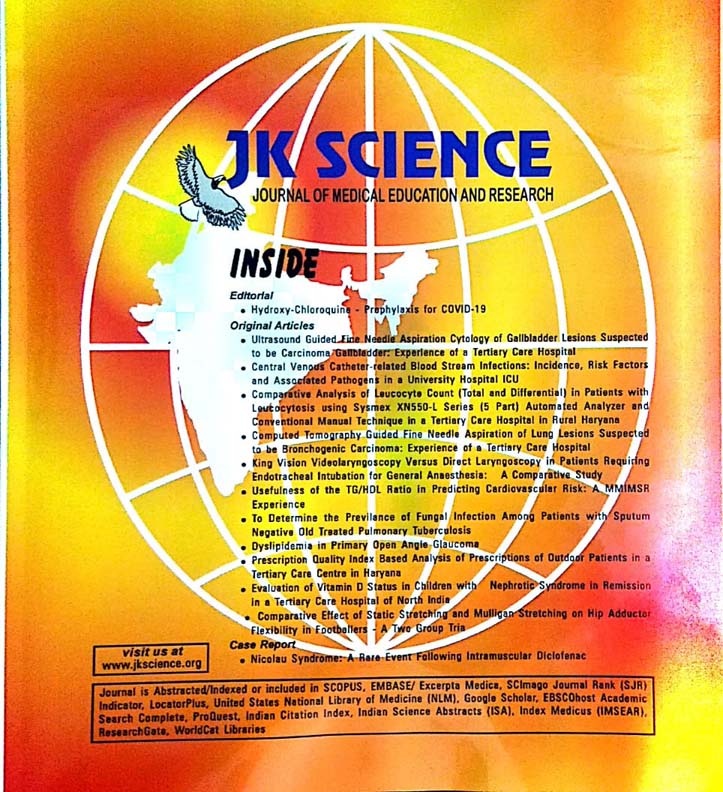23 Cytomorphological Patterns of Malignant Lymph Nodes in a tertiary Care Centre
Keywords:
Fine Needle Aspiration Cytology (FNAC), Lymphadenopathy, Malignancy, MetastaticAbstract
Background: The lymph nodes function as an antigen filter for the reticuloendothelial system. They form
part of immune system and function to fight disease and infections. Thus, clinical recognition and urgent
diagnosis of palpable lymphadenopathy is of paramount importance. The aim of this study was to analyse the
cytomorphological patterns of malignant lymph nodes by using FNAC. Material and Methods: This is an
observational study which includes fine needle aspiration cytology of 160 cases of lymphadenopathy presenting
to the department of pathology for 2 years. Results: A total of 160 malignant lymph node lesions were
aspirated, of which 127 (79.38%) were of metastatic origin and 33 (20.63%) were reported as lymphomas.
The most common metastatic malignancy reported was squamous cell carcinoma (62.98%). The cervical
lymph node was the most commonly involved lymph node. Conclusion: The head and neck was reported as
the most common primary site in case of metastatic squamous cell carcinoma. FNAC is an effective, reliable
and safe diagnostic modality for the diagnosis of malignant lymph node lesions.
Downloads
Downloads
Published
How to Cite
Issue
Section
License
Copyright (c) 2022 JK Science: Journal of Medical Education & Research

This work is licensed under a Creative Commons Attribution-NonCommercial-ShareAlike 4.0 International License.





